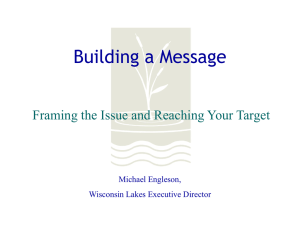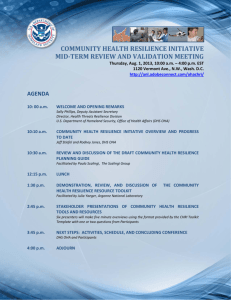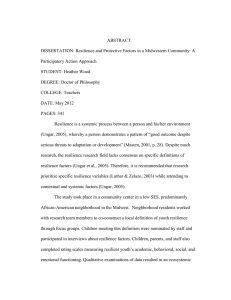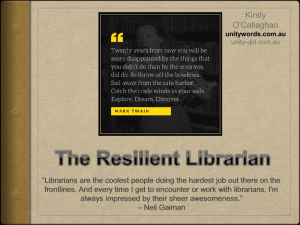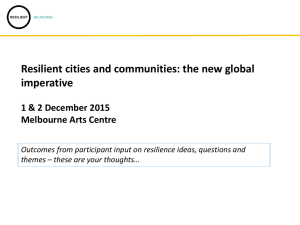Communication strategies after a disaster
advertisement
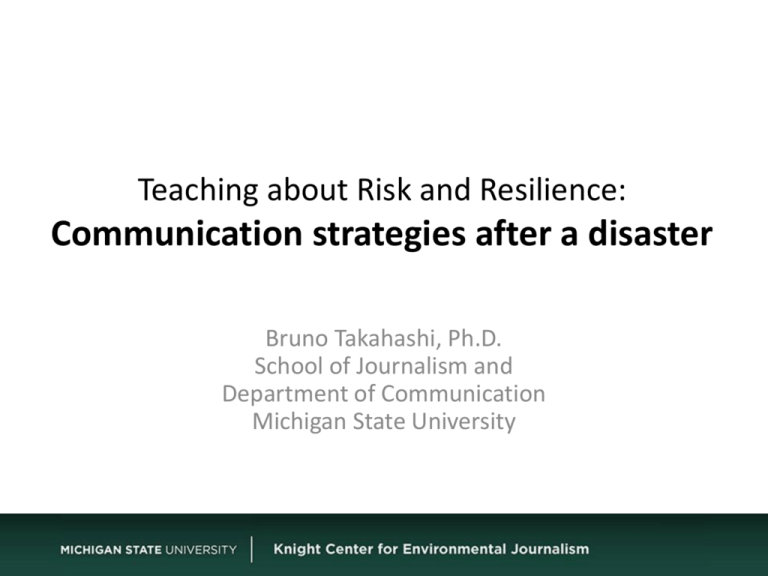
Teaching about Risk and Resilience: Communication strategies after a disaster Bruno Takahashi, Ph.D. School of Journalism and Department of Communication Michigan State University Key concepts • • • • • Risk communication Crisis communication Public relations Media reporting of crisis, risk and resilience Role of social media Communication about different types of risks Multidisciplinary perspective in risk communication • Decision sciences – Social psychology (psychometric approach) • • • • Behavioral economics Communication science Environmental studies Etc. Risk communication • What is it? (Covello, 1992; DHHS, 2002) – The exchange of information among interested parties about the nature, magnitude, significance, and control of risks. What do we mean by “risk” in PR? (… different from “uncertainty”? Risk = Probability x Consequence Theoretical approaches • • • • • • Mental models approach Social constructionist approach Hazards plus outrage approach Social amplification of risk Extended parallel process model Etc. Some goals of risk communication • • • • Share information Change beliefs Change risk perceptions Change behaviors RISK Key areas related to RISK COMMUNICATION Perception (Severity and susceptibility) Assessment Messaging Decision Making Planning/Management • Media response to crisis/risk Optimistic bias? Familiarity and Dread? Risk messaging • Designing information to effectively communicate about risks • Content of messages (statistical/narrative, framing, etc) Optimistic bias, fear • Types of appeals appeals, gain/loss framing, etc. • Sources, Channels • Information Seeking, Literacy • Theoretical approaches and message design • EPPM, Prospect Theory and others What do we mean by “crisis” in PR? Crisis Communication Plans Before During After (Pre-Crisis Planning) (Crisis Management) (Recovery and Review) What can you do ahead of time? • Identify threats • Identify audiences/stakeholders for threats • Develop messages for each threat • Conduct training for spokespeople • Ensure access to critical resources Role of the media Journalistic norms? (Impact, Relevance, Timeliness, Uniqueness, Prominence, Visual Convenient) • Journalists and PR • How does risk and resilience fit within traditional news values? • How to communicate risk to journalists? • Studies of the content of mediated reporting of risk events – Nature of the content • Type of information • Accuracy of information etc. • Relationship between media and organization/stakeholder groups • How to report, work with the media, case studies of reporting Role of social media • The audience has evolved, it is no longer a passive receiver of information. • How is social media used in crisis situations? – From an organizational perspective – From the audience’s perspective • Social media use to memorialize victims, for collective coping, emergency requests, dissemination of information, etc. Visual representations of risk Risk communication best practices 1. Risk com is an ongoing process. 2. Conduct pre-event planning. 3. Foster partnerships with the public. 4. Coordinate and collaborate with credible sources. 5. Meet the needs of the media and remain accessible. 6. Listen to the public’s concerns and understand the audience. 7. Communication with compassion, concern, and empathy. 8. Demonstrate honesty, candor and openness. 9. Accept uncertainty and ambiguity. 10. Provide messages that foster self-efficacy. Challenges in risk communication • • • • Limitations of sources/spokes-people Limitations in available data/message Limitations of media Limitations of receivers



